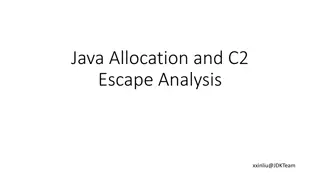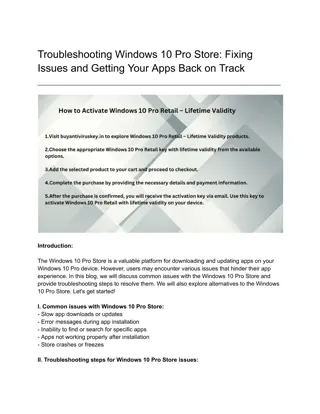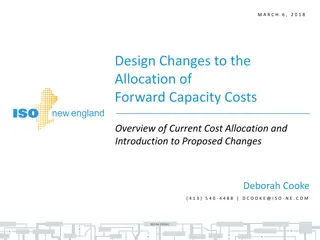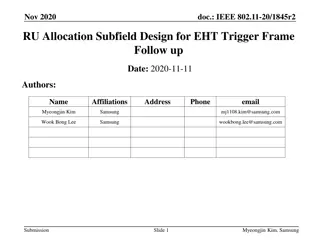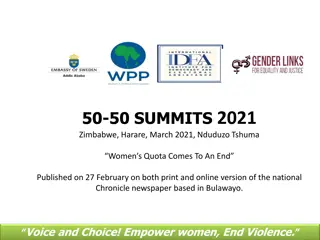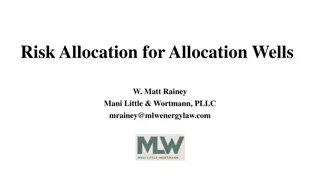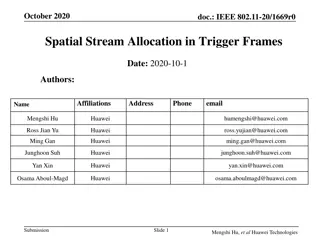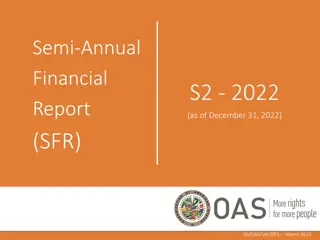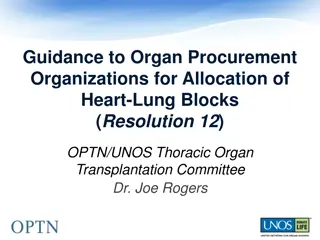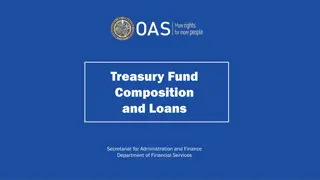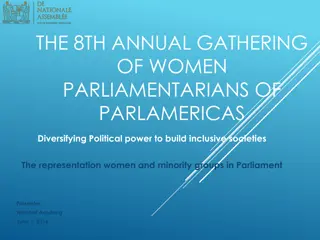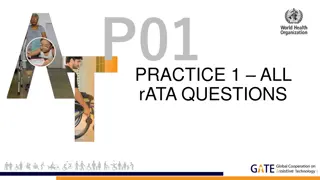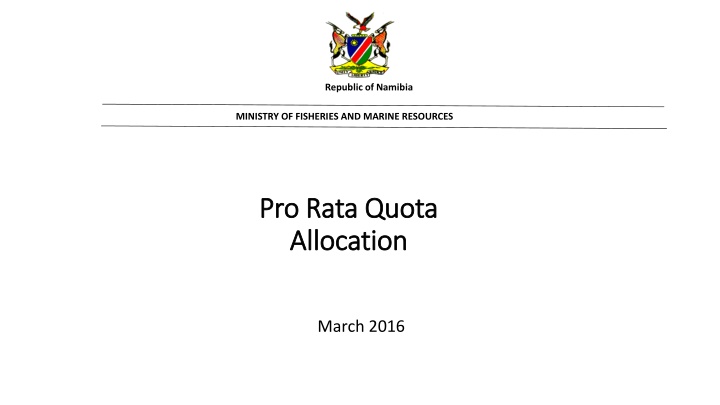
Challenges in Pro-Rata Quota Allocation Criteria
The current pro-rata quota allocation system in Namibia's Ministry of Fisheries and Marine Resources faces challenges in effectively considering all the criteria outlined in the Act. While the allocation is based on factors like Namibian ownership, employment, investment, socio-economic concerns, and more, measuring these parameters objectively remains a challenge. This system has been in place for over 20 years but may require refinement to ensure fair and comprehensive allocation of fishing quotas.
Download Presentation

Please find below an Image/Link to download the presentation.
The content on the website is provided AS IS for your information and personal use only. It may not be sold, licensed, or shared on other websites without obtaining consent from the author. If you encounter any issues during the download, it is possible that the publisher has removed the file from their server.
You are allowed to download the files provided on this website for personal or commercial use, subject to the condition that they are used lawfully. All files are the property of their respective owners.
The content on the website is provided AS IS for your information and personal use only. It may not be sold, licensed, or shared on other websites without obtaining consent from the author.
E N D
Presentation Transcript
Republic of Namibia MINISTRY OF FISHERIES AND MARINE RESOURCES Pro Rata Quota Pro Rata Quota Allocation Allocation March 2016
Outline Outline Criteria on Quota Allocation (Section. 33(4)) Pro Rata Quota Allocation Currently Current Pro Rata: Challenges Pro Rata Allocation: Balancing Act Pro Rata Quota Allocation: New Aspects Pro Rata Formula Development: The Steps
Criteria on Quota Allocation (Section. 33(4)) When considering an application for a right, the Minister may have regard to: 1. (a) whether or not the applicant is a Namibian citizen; 2. (b) where the applicant is a company, the extent to which the beneficial control of the company vests in the Namibian citizens; 3. (c) the beneficial ownership of any vessel which will be used by the applicant; 4. (d) the ability of the applicant to exercise the right in a satisfactory manner; 5. (e) the advancement of persons in Namibia who have been socially, economically or educationally disadvantaged by discriminatory laws or practices which were enacted or practised before the independence of Namibia; 6. (f) regional development within Namibia; 7. (g) co-operation with other countries, especially those in Southern African Development Community; 8. (h) the conservation and economic development of marine resources; 9. (i) socio-economic concerns; 10. (j) the contribution of marine resources to food security; and 11. (k) any other matter that may be prescribed.
Pro Rata Quota Allocation Currently Pro rata quota allocation of fish to right holders is not new (over 20 yrs): A. It is provided for in the Marine Resources Act Section 33 and 39 A. It is the Basis of current quota allocations to all TAC fisheries in Namibia. Current Criteria: i. Namibian ownership ii. Employment iii. Investment iv. Socio-economic concerns v. Value addition vi. Utilization of quotas vii. Any other matter
Pro Rata Quota Allocation Pro Rata Quota Allocation Currently continued... continued... Currently C. Under current criteria, i. The right holder are invited to submit annual performance based on criteria set for that fishery: i. Criteria for different fisheries vary depending on specifics in that fishery A Calculation, based on the criteria, determines a pro-rata score for every right holder or group of right holders in case of Joint Ventures iii. Depending on TAC set for that fishery, the pro-rata score is used to determine amount of quota for every right holder for that season. iv. Where criteria is not applicable (e.g. for new right holders with regard to investment), a flat amount is set for all right holders ii.
Current Pro Rata: Challenges 1. The pro rata quota allocation as is applied currently has the following challenges: A. It does not take into account all the 11 criteria as per the Act i. In most sub-sectors criteria consist of about 6 parameters B. An objective way of measuring the criteria is a challenge i. Currently the industry does self reporting, with no standardised way of measuring performance for all companies. C. There is minimal verification of performance as reported by the companies: i. It is often a challenge to determine whether companies are reporting factually. D. There is no specific weight attached to each criteria i. All criteria are not the same E. The selected criteria for each fishery, and method of determining pro-rata, is not Gazetted.
Pro Rata Allocation: Balancing Act BOTH the Industry and Government have interests to protect in pro-rata allocation of TAC: Industry seeks to: 1. Security of Quota 2. Maximise profits 3. Sustain investments in the fishery Government seeks to: 1. Maximise economic development and wealth redistribution to all citizens, through resource rent (taxes, levies and fees). 2. Maximise employment in the sector 3. Sustain fisheries resources for both present and future generations (no one should feel left out) 4. Maximise participation of Namibians in the fishery
Pro Rata Quota Allocation: New Aspects 1. Assignment of weights on criteria as per the Act 1. Different weights in different fisheries Development of a Pro Rat allocation formula 2. Develop mechanism to measure performance in each criteria issue of discussion today - Based on company data, with sufficient transparency () 3. Develop mechanism for verification of performance on every criteria Periodic verification for all fisheries? 4. Gazette criteria formula for pro-rata allocation Based on the Act, in consultation with stakeholders.
Pro Rata Formula Development: The Steps Step 1: Stakeholder consultation on criteria Presentation of current status, and Criteria Open discussions on possible weighting options, and reasons Step 2: MFMR technical consideration of options on criteria formula: Including implementation and verification mechanisms Based on the Act, all Government policies, and realities as presented by the companies Step 3: Submission of draft MFMR proposals on pro-rata formula for each fishery: To all stakeholders for consideration and comments Step 4: Final revision of MFMR pro-rata formula Step 5: Submission to Hon Minister for consideration And Gazettement

